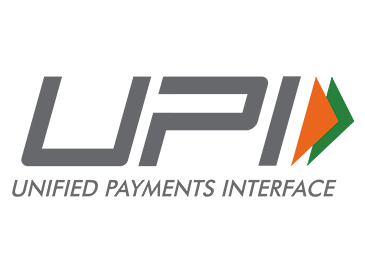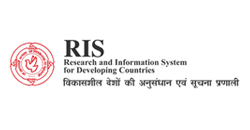Digitalisation

Digitalisation
The transformation towards a digital economy globally has attracted much attention in recent years and garnered great momentum ever since the great disruption caused by the Covid-19 Pandemic. The pandemic highlighted that Digital Public Infrastructure is fundamental to well-functioning economies and citizens’ well-being. DPI drives innovation, competition and inclusion, and is governed by enabling rules and relies on a technology layer, governance framework and a multistakeholder ecosystem. With the thrust on Digital India, the story of digital infrastructure and services in India will always be seen by the world with a certain regard and appreciation. The emergence of DPI, aimed at improving financial literacy, innovation, entrepreneurship, employment generation, and empowering beneficiaries has played a critical role in uplifting the economy and bringing it to the stature where it stands today.
One of the fastest-growing markets for financial inclusion is India, driven by government initiatives as well as public-private partnerships. Over a span of time, digital payment systems have been a ‘game-changer’ in India and have made a phenomenal socio-economic impact. It has resulted in enhancing community resilience by providing an efficient and cost-effective means of making remittances, enhanced ease of access to account holders in paying bills, fees and other payments conveniently. India has emerged as an architect of a new digital economy wherein digital payments have been revolutionary and have extended its reach through different channels like internet banking, mobile banking, two factor/multifactor authentication, debit card schemes like RuPAY and Unified Payments Interface (UPI), - an immediate payment system by National Payments Corporation of India, Open Network for Digital Commerce etc. Further, the direct transfer of government assistance/funds to targeted beneficiaries through 'Direct Benefit Transfer' (DBT) has brought transparent and efficiency in outcomes. Linkage between DBT, Aadhaar enabled Payment System (AePS) & UPI platform for enhancing digital financial inclusion has harmoniously enabled wide range of safeguards in the digital payment space.

UPI is a system that powers multiple bank accounts into a single mobile application (of any participating bank), merging several banking features, seamless fund routing & merchant payments into one hood. It also caters to the “Peer to Peer” collect request which can be scheduled and paid as per requirement and convenience. In a nutshell, UPI has transformed digital payments, allowing users for the first time to easily transfer money instantly from one bank account to another: from a customer to a business, or between individuals.
Unique Features of UPI
- Immediate money transfer through mobile device round the clock 24*7 and 365 days.
- Single mobile application for accessing different bank accounts.
- Single Click 2 Factor Authentication – Aligned with the Regulatory guidelines, yet provides for a very strong feature of seamless single click payment.
- Virtual address of the customer for Pull & Push provides for incremental security with the customer not required to enter the details such as Card no, Account number; IFSC etc.
- QR Code
- Best answer to Cash on Delivery hassle, running to an ATM or rendering exact amount.
- Merchant Payment with Single Application or In-App Payments.
- Utility Bill Payments, Over the Counter Payments, QR Code (Scan and Pay) based payments.
- Donations, Collections, Disbursements Scalable.
- Raising Complaint from Mobile App directly.
UPI Ecosystem-Participants in UPI
- Payer PSP
- Payee PSP
- Remitter Bank
- Beneficiary Bank
- NPCI
- Bank Account holders
- Merchants

- Direct Benefit Transfer (DBT) was launched in 2013 as a major reform initiative for 24 schemes in 43 districts by Government of India.
- The DBT system works through its customer-friendly processes and ensures the last mile connectivity.
- DBT is an attempt to ensure a better and timelier delivery of benefits to the people.
- DBT aims to transfer benefits directly into the bank/postal accounts, preferably Aadhaar (biometric based unique identity number) seeded, of accurately targeted beneficiaries.
- This marks a paradigm shift in the process of delivering government benefits directly into the hands of the beneficiaries like:
- Wage payments,
- Fuel subsidies,
- Food grain subsidies, etc.
- DBT enables setting up of digital platforms that are accessible, scalable and reliable, and provides user-friendly interfaces between the Government and the beneficiaries
- This helps in speeding up payments, removing leakages, and enhancing financial inclusion.
Prerequisites of DBT
- Identification of beneficiaries and digitisation of beneficiary database
- Opening of bank accounts
- Aadhaar enrolment
- Seeding of Aadhaar in beneficiary database and bank accounts
- Last mile connectivity/service delivery
Types of Transfer
Cash: Cash transfers can be subsidy schemes or social security pensions, scholarships and fellowships, a lot of scholarships, particularly, for foreign students are also being given through the DBT platform.
In-Kind: In-kind transfers can be food transfers (also called public distribution system) or fertiliser. In recent times, skill development trainings have also been included as part of the DBT platform.
For more information click here
- It is an initiative aiming at promoting open networks for all aspects of exchange of goods and services over digital or electronic networks. ONDC is to be based on open-sourced methodology, using open specifications and open network protocols independent of any specific platform.
- The foundations of ONDC are to be open protocols for all aspects in the entire chain of activities in exchange of goods and services, similar to hypertext transfer protocol for information exchange over internet, simple mail transfer protocol for exchange of emails and unified payments interface for payments.
- These open protocols would be used for establishing public digital infrastructure in the form of open registries and open network gateways to enable exchange of information between providers and consumers. Providers and consumers would be able to use any compatible application of their choice for exchange of information and carrying out transactions over ONDC. Thus, ONDC goes beyond the current platform-centric digital commerce model where the buyer and seller have to use the same platform or application to be digitally visible and do a business transaction. ONDC protocols would standardize operations like cataloguing, inventory management, order management and order fulfilment. Thus, small businesses would be able to use any ONDC compatible applications instead of being governed by specific platform centric policies.
- This will provide multiple options to small businesses to be discoverable over network and conduct business. It would also encourage easy adoption of digital means by those currently not on digital commerce networks. ONDC is expected to make e-Commerce more inclusive and accessible for consumers. Consumers can potentially discover any seller, product or service by using any compatible application or platform, thus increasing freedom of choice for consumers. It will enable the consumers to match demand with the nearest available supply. This would also give consumers the liberty to choose their preferred local businesses. Thus, ONDC would standardize operations, promote inclusion of local suppliers, drive efficiencies in logistics and lead to enhancement of value for consumers.
- For more information click here













